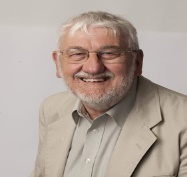
Peter J F Henderson
Astbury Centre for Structural Molecular Biology - University of Leeds, UK
Title: Kinetic and molecular dissection of coupled ion-substrate membrane transport proteins
Biography
Biography: Peter J F Henderson
Abstract
The Mhp1 Na+, -hydantoin membrane symport protein from Microbacterium liquefaciens is a paradigm for the nucleobasecation-
symport, NCS-1, family of transport proteins found widely in archaebacteria, bacteria, yeasts and plants. Th eir
metabolic roles include the capture by cells of nitrogen compounds and vitamins from the environment. Mhp1 is also a
structural model for the huge range of ‘5-helix-inverted-repeat’ superfamily of proteins, because, unusually, crystal structures
are available for its open-outwards, occluded, and open-inward conformations. Here we accomplish a detailed dynamic model
of the partial reactions in an alternating access cycle of membrane transport derived from substrate binding studies to the
purifi ed Mhp1 protein by combining novel mass spectrometry, stopped-fl ow and steady state kinetic analyses and mutagenesis.
Th e mechanism of coupling substrate transport to the Na+, -gradient is revealed during a sequence of mostly reversible kinetic
steps that explain how transfer of substrate across the membrane is aff ected by changes in conformational states. Th e AceI
H+/substrate antiport protein from Acinetobacter baumannii is a paradigm for the proteobacterial antimicrobial compound
effl ux (PACE) family of drug effl ux proteins found dispersed throughout the Proteobacteria. AceI contributes to the resistance
of Acinetobacter baumannii towards the widely used antiseptic, chlorhexidine. Currently there is little structural information
about the PACE family of transport proteins, but progress towards understanding the recognition of substrates and cations by
AceI and its homologues will be discussed.

